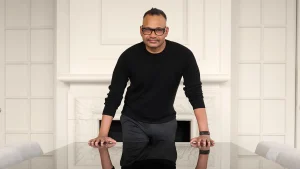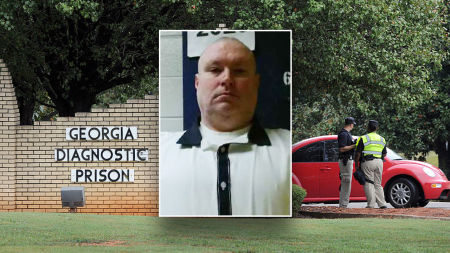Russia’s Grand Reconstruction of Mariupol: A City Transformed Beyond Recognition
From Rubble to Russian Vision: The Controversial Rebirth of a Besieged Ukrainian Port City
In the shadow of one of the war’s most devastating sieges, Mariupol is rising again—though in an image far different from what longtime residents remember. The southeastern Ukrainian port city, once home to nearly half a million people and the site of the iconic Azovstal steel plant, has become the showcase for Russia’s vision of reconstruction in occupied territories. For Ukrainians who fled the brutal 2022 siege that reduced much of the city to rubble, what’s emerging from the destruction is increasingly unrecognizable—and inaccessible.
“This isn’t the Mariupol I knew,” says Olena Kovalenko, a former resident who fled during the three-month siege that became one of the war’s defining battles. Speaking via secure messaging from western Ukraine, she describes watching videos of her transformed neighborhood through tears. “They’re not just rebuilding; they’re erasing our history.” The Russian occupation authorities have undertaken what appears to be the largest reconstruction project in any occupied Ukrainian territory, pouring billions of rubles into rebuilding apartment complexes, roads, and public spaces. But this massive undertaking comes with an unmistakable political dimension—what many international observers describe as “Russification”—the systematic replacement of Ukrainian cultural markers with Russian ones.
The Architectural Remaking of a Strategic Port
The physical transformation of Mariupol has been swift and comprehensive. Where Ukrainian architectural styles once dominated, new structures feature distinctly Russian design elements. The Theater of Drama, infamously bombed in March 2022 while hundreds of civilians sheltered inside, has been completely rebuilt with a Russian neoclassical facade. Apartment buildings feature decorative elements common in modern Russian construction, while monuments to Soviet-era figures have been reinstalled in city squares. Russian authorities have renamed major streets, replacing Ukrainian historical figures with Russian ones.
Beyond aesthetics, the reconstruction represents a strategic priority for Moscow. Mariupol’s deep-water port on the Sea of Azov connects to the Black Sea and has historically been crucial for Ukrainian steel and grain exports. Russian Deputy Prime Minister Marat Khusnullin, who oversees reconstruction efforts in what Russia calls “new territories,” stated during a televised tour of construction sites that “Mariupol will become a pearl of the Russian Federation.” According to Russian state media, over 50 billion rubles (approximately $550 million) have been allocated for the city’s rebuilding through 2025. New residential complexes have risen at remarkable speed, with Russian construction firms importing thousands of workers from across Russia and Central Asia to complete projects on accelerated timelines. The effort extends beyond housing to include new schools, medical facilities, and recreational spaces—all operating under Russian administrative systems and curricula.
Property Rights in Limbo: The Struggle to Reclaim Homes
For former residents attempting to return or simply claim ownership of their property, the reconstruction has created a bureaucratic labyrinth nearly impossible to navigate. “My apartment building still stands, but I’ve been told it now belongs to the Russian Federation,” explains Dmytro Petrenko, who owned a three-bedroom apartment in Mariupol’s Left Bank district. Like thousands of others, Petrenko fled to Ukrainian-controlled territory during the siege. “To claim my own property, I would need to accept a Russian passport and sign documents recognizing Russian sovereignty. It’s an impossible choice.”
International legal experts describe the situation as a potential violation of international humanitarian law, which prohibits an occupying power from making permanent changes to occupied territory or transferring its own population into it. Oleksandra Matviichuk, head of the Center for Civil Liberties in Kyiv and a Nobel Peace Prize laureate, tells me, “What we’re witnessing in Mariupol is a systematic attempt to cement occupation through demographic engineering and property transfer.” The Russian-installed authorities have implemented a property registration system requiring residency in the city and acceptance of Russian documentation. Those who fled and remain in Ukrainian-controlled territory effectively have no legal recourse to maintain ownership. Meanwhile, new residents—many relocated from Russia—are being offered subsidized mortgages and other incentives to settle in the newly constructed housing. According to Ukrainian government estimates, as many as 100,000 new residents from Russia may have moved into the city, though these figures cannot be independently verified.
A New Demographics: Cultural and Social Transformation
The demographic shift in Mariupol extends beyond housing to the very fabric of daily life. Russian is now the exclusive language of education, administration, and commerce. Ukrainian-language books have been removed from libraries, and the educational curriculum has been completely replaced with Russian standards. Local media outlets exclusively broadcast Russian programming, while internet traffic is routed through Russian servers, subject to the same restrictions as mainland Russia.
“They’re creating a different city with different people,” says Professor Oleksandr Mykhelson, who studies occupied territories at Kyiv-Mohyla Academy. “This isn’t just about rebuilding infrastructure; it’s about creating a narrative that Mariupol was always Russian at heart.” Religious life has also undergone transformation, with the Ukrainian Orthodox Church effectively replaced by the Russian Orthodox Church. Historical museums have been renovated with exhibitions emphasizing historical connections to Russia while minimizing or removing Ukrainian cultural contexts. Even the city’s celebrated Metallurgy Day, traditionally a major local holiday honoring steelworkers, has been reshaped around Russian traditions and symbolism. Social media accounts of Russian-installed officials regularly showcase cultural events featuring Russian performers, military parades celebrating Russian holidays, and school programs teaching students about “their place in the Russian world.”
International Response and Future Implications
The international community has remained largely focused on active combat zones rather than the more subtle transformation occurring in occupied territories like Mariupol. While Western leaders consistently reaffirm that they do not recognize Russia’s claimed annexation of Ukrainian territories, practical mechanisms to address the situation remain limited. Sanctions specifically targeting companies involved in reconstruction have been implemented by some countries, but their effect appears minimal on the ground.
Ukrainian President Volodymyr Zelensky has repeatedly emphasized that reclaiming all occupied territories, including Mariupol, remains a non-negotiable element of any future peace agreement. “We will not forget any Ukrainian city or citizen living under occupation,” Zelensky stated in a recent address marking the second anniversary of Mariupol’s fall. “Rebuilding can be done twice—once by occupiers and once again when Ukraine returns.” However, with each passing month, the physical reality of Russian reconstruction makes potential reintegration more complicated. Urban planning experts note that the scale of changes—from infrastructure networks now connected to Russian systems to property records existing only in Russian databases—creates compounding technical challenges for any future reversion to Ukrainian control.
The Human Cost: Lives Interrupted and Identity Challenged
Perhaps most profound is the human dimension of Mariupol’s transformation. An estimated 20,000 civilians may have died during the siege, according to Ukrainian authorities, though precise figures remain impossible to confirm. Those who survived and remained face a drastically altered reality where expressing Ukrainian identity can be dangerous. Human rights organizations have documented cases of detention and harassment of residents who question Russian authority or maintain Ukrainian cultural practices.
For the diaspora of former Mariupol residents now scattered across Ukraine and Europe, watching their hometown transform through social media and Russian news broadcasts produces a unique form of trauma. “I feel like I’m grieving someone who is still alive but unrecognizable,” says Iryna Stepanenko, a former schoolteacher who fled to Poland. Support groups for displaced Mariupol residents have formed in major Ukrainian cities, where people share information about relatives still in the city and collectively document changes through available photos and videos. Some maintain digital archives of pre-war Mariupol, preserving street views, cultural sites, and personal photographs of a city that increasingly exists only in memory. As one displaced resident poignantly observed during a community gathering in Kyiv: “They can rebuild every building, rename every street, and bring new people to live there. But the real Mariupol lives in us, and one day we will bring it home again.” Whether that hope can withstand the reality of Russia’s comprehensive reconstruction remains one of the war’s most painful open questions.










